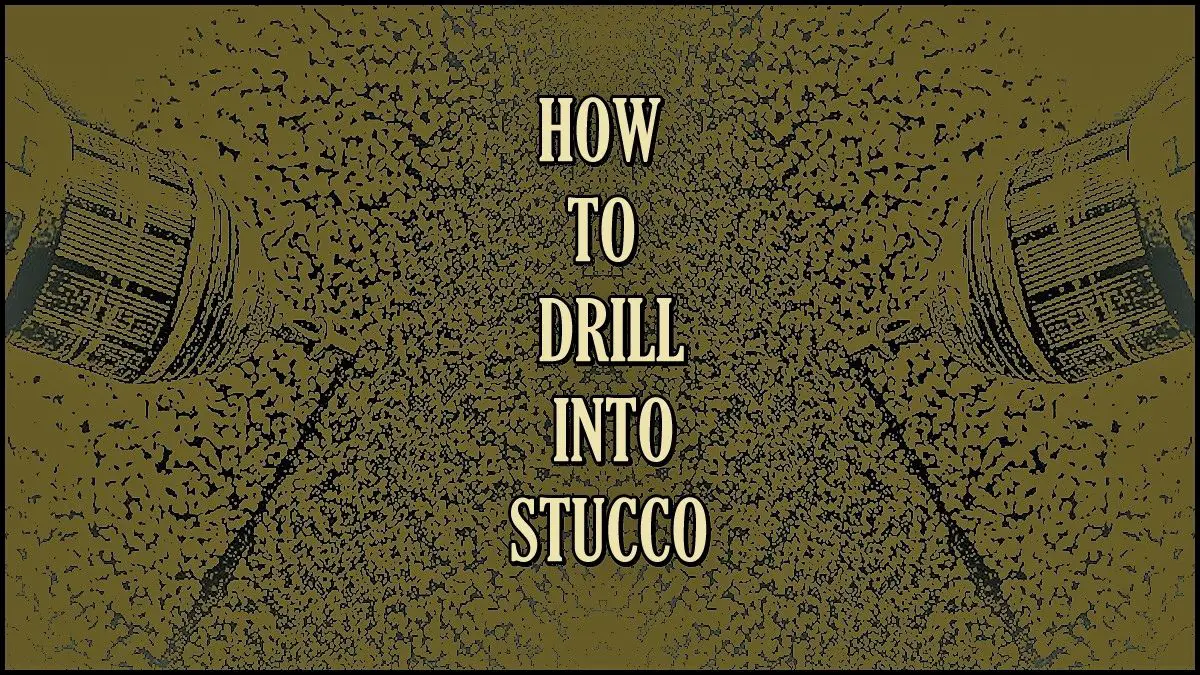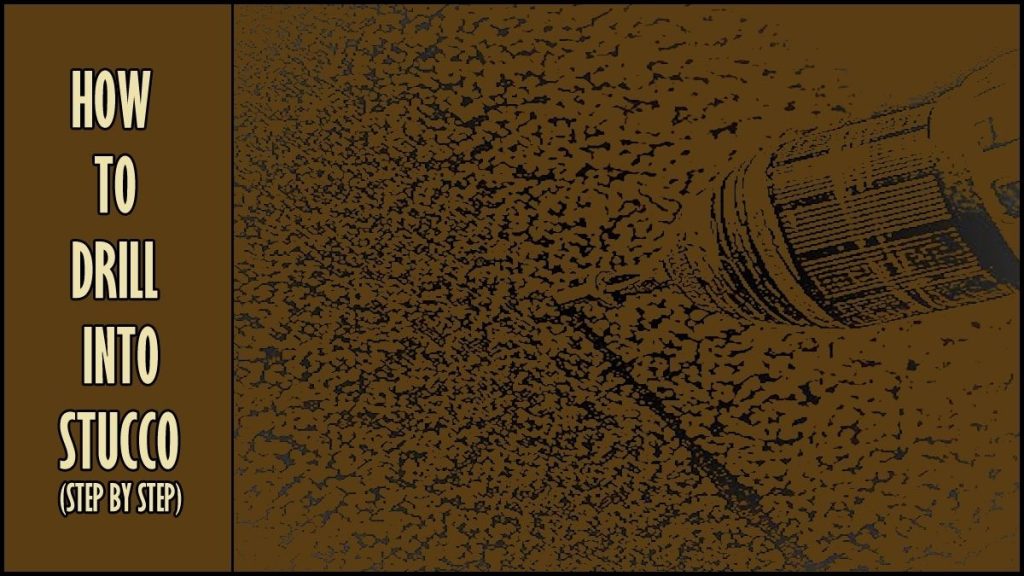
Are you a DIYer? Or a professional drill user? If the answer is yes, then you are welcome here. This article is about a common and useful topic for a driller which is how to drill into stucco. Here, we will cover the step by step process of drilling into stucco which helps you to do the task easily and precisely.
Drilling into stucco can seem like a daunting task, especially if you’ve never done it before. However, it’s a straightforward process with the right tools and techniques. As a drill user, everyone should know about the process and major techniques that will bring the best results.
In this step-by-step guide, we’ll walk you through everything you need to know to drill into stucco safely and effectively. Basically, we will try to know the basic information which would make your drilling journey more smooth and convenient.
Related Article: The 8 Best Cordless Drills of 2024 for Professional Users

Related Article: The 9 Best Corded Drills of 2024 for Professional Users
You may also read: Can a Power Screwdriver Replace Your Drill? – Quick Guide
How to Drill Into Stucco
Here, we are discussing the process of drilling into stucco step by step, which would be a helpful guide for all drill users.
Step 1: Gather Your Tools And Materials
Collecting your tools and materials properly is a major task before starting the job. Basically, it helps to do your task with an arranged way that maintains your quality of work and also in time.
So before you start drilling, you’ll need to gather your essential tools and materials. Here’s what you’ll need:
- Power Drill:
You’ll need a drill with a variable speed setting and a hammer function to drill into stucco effectively. A corded drill is generally more powerful than a cordless drill and is better suited for heavy-duty drilling.
- Masonry Drill Bit:
You’ll need a masonry bit that’s designed to drill into the stucco. Look for a bit that’s at least 1/4 inch in diameter and its an essential equipment for drilling into stucco properly. Basically, masonry drill bit can be used for brick, concrete or masonry which are very useful for home building and repair.
- Masking Tape:
Masking tape is an useful equipment for drilling precisely. Use masking tape to mark the spot where you want to drill. This will help you drill precisely and prevent the stucco from cracking or chipping.
- Safety Goggles:
When you drill into stucco, you should always maintain the precautionary safety rules. One of the most used safety tool is safety goggle. You have to wear safety goggles to protect your eyes from flying debris and other harmful particles. As a drill user, you should wear safety goggles always when you drill something, and its a mandatory task.
- Dust Mask:
Another important safety tool is dust mask which protect your face from harmful particles. Stucco dust can be hazardous to your health, so wear a dust mask to protect your lungs. So dust mask is also a mandatory tool when you drill or stay near of drilling area.
- Vacuum Cleaner:
Vacuum cleaner is another essential tool for make your drilling area clean and comfortable. You can use vacuum cleaner for making a clean area with no time. Therefore, use a vacuum cleaner with a HEPA filter to clean up the dust after drilling.
Step 2: Choose The Right Spot
Before you start drilling, choose the right location for your hole. Stucco is a hard, brittle material, and it’s essential to drill in the right spot to avoid cracking or chipping the stucco. As a matter of fact, choosing the proper spot with proper tools can help you to get the best possible outcome.
If you’re drilling a hole for a screw or anchor, make sure to choose a spot that’s solid and flat. Avoid drilling near the edges of the stucco or where the stucco meets another material, such as wood or metal. These areas are more likely to crack or chip.
Step 3: Mark The Spot With Masking Tape
Once you’ve chosen the right spot, use masking tape to mark the spot where you want to drill. This will help you drill precisely and prevent the stucco from cracking or chipping.
If you can mark the spot precisely, it would be a start of proper drilling. So mark the spot properly by using masking tape and take care of your surroundings when you drill.
Step 4: Set Your Drill To The Right Speed And Function
Since it is the task of drilling, so you have to set up your drill properly. You should also set up it with right speed and function which provide the best possible outcome. As an expert driller, you have to monitor the functional system all through the process.
Basically, stucco is a hard, dense material, and it requires a drill with a variable speed setting and a hammer function. Set your drill to a low speed and the hammer function to “on” to start drilling.
Step 5: Start Drilling
When you and your process is ready to start properly, then start drilling with proper safety precautions. And when you start into a drilling process, don’t think about other thinking which can distract your focus.
Place the tip of the masonry bit on the spot you marked with masking tape. Hold the drill steady and apply gentle pressure to start drilling. Use a circular motion to drill into the stucco slowly.
Step 6: Use Water To Keep The Bit Cool
Drilling into stucco can generate a lot of heat, which can cause the bit to wear out quickly. To prevent this, use a spray bottle to keep the bit cool while you’re drilling. Spray water on the bit every few seconds to keep it cool. Indeed, it might be a useful tips for preventing from damages which keep your machine efficient and cool.
Step 7: Drill To The Right Depth
Drill into the stucco slowly and carefully, making sure to drill to the right depth. If you’re drilling a hole for a screw or anchor, drill to the right depth for the screw or anchor you’re using.
As an expert driller, you should drill to right depth which you actually want to. You have to fix the precise depth and set up your machine before you start drilling.
Step 8: Remove The Bit And Clean Up
Once you’ve drilled your hole, remove the bit from the drill and use a vacuum cleaner with a HEPA filter to clean up the dust. This will help prevent the dust from spreading and reduce the risk of health problems.
Cleaning after drilling is an important activity that should takes part professionally with the proper tools. Indeed, it is an essential task because without cleaning up properly, it would be a seriously unhealthy environment.
TO KNOW ABOUT BEST DRILLS, GO HERE >>
Related Article: How to Use a Heat Gun to Remove Paint
Final Thoughts
In conclusion, drilling into stucco requires a bit of preparation and patience, but it’s a task that can be accomplished with the right tools and technique. By following the step-by-step guide outlined above, you can successfully drill into stucco without damaging the surface or compromising its structural integrity.
Basically, drilling into stucco can seem like a challenging task which is a straightforward process. As a driller, you can follow all these steps and do it precisely for getting the best possible results. Always remember to take safety precautions, such as wearing safety goggles and a dust mask, and to use a masonry bit designed specifically for stucco. With these tips in mind, you’ll be able to confidently tackle any drilling project on stucco surfaces.
Related Article: The 11 Basic Hand Tools Safety Rules for Professional Users
You may also read: The 11 Basic Power Tools Safety Rules for Professional Users





3 thoughts on “How to Drill Into Stucco (Step By Step Guide)”